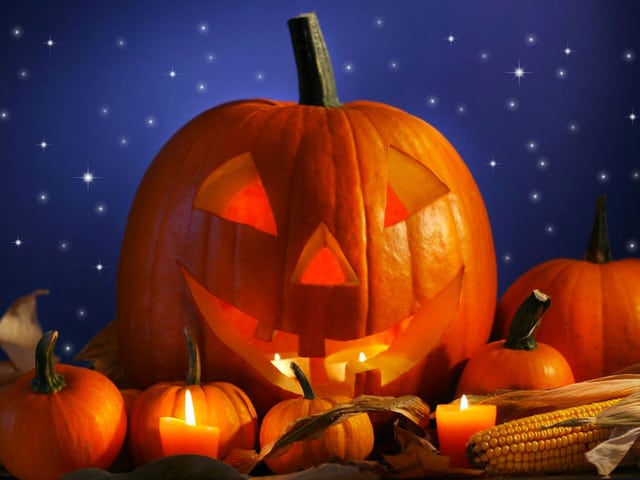
Halloween is one of the only holidays where we don’t gather around the dinner table for a big family meal. That said, Halloween involves many food traditions, some with ancient roots. Pumpkins are carved, kids bob for apples, and candy is consumed in massive quantities… lots and lots of candy. In fact, the amount of candy eaten on Halloween has long outnumbered the amount eaten at Christmas and Valentine’s Day. In 2011, $2.3 billion was spent on Halloween candy. That’s a lot of sugar!
Halloween and its traditions have strong roots in three celebrations– the Celtic festival of Samhain, the Roman festival of Pomona, and All Saints’ Day and All Soul’s Day. Samhain, or “summer’s end,” is an ancient Celtic festival that marked the end of summer and harvest season, as well as the arrival of the long, dark days of winter. Celts living in the areas of Scotland, Wales, Ireland, England, and Northern France relied on hunting and herding for food. When summer came to a close, the healthiest animals in the herds were taken to a winter shelter, while the rest were cooked and feasted upon. The Celts believed that during Samhain, the spirits of deceased ancestors were free to roam among the living. The spirits were thought to possess powers of fortunetelling, warning the living of trouble ahead. Villagers made offerings of food and wine to their ancestors in hopes of receiving a visit. To avoid visits from any unwanted spirits, the living would wear “ghoulish disguises” so that they might be mistaken for spirits themselves. The costumed villagers would then form a parade in hopes of leading the unwanted spirits out of the village.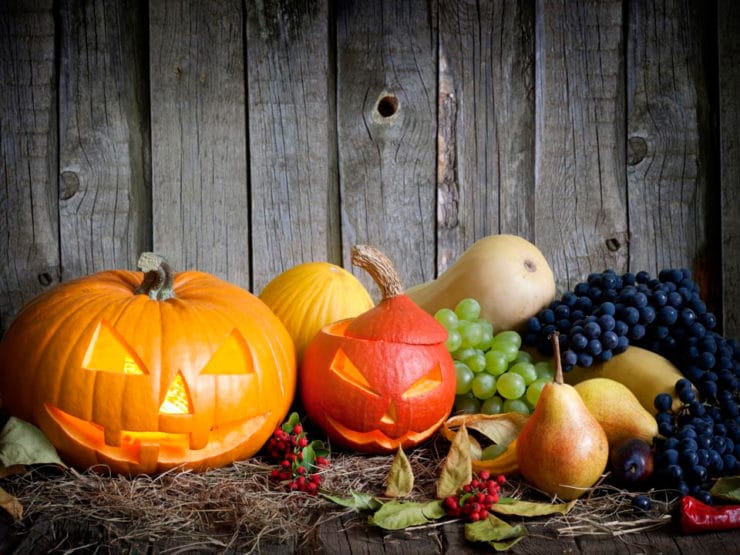
Another harvest festival, Pomona, stretches back to ancient Roman times. Pomona was the Roman goddess of orchards and harvest. On November 1, the Romans celebrated her with offerings of nuts, apples, and other orchard fruits. Apples were thought to be a symbol of love and fertility. Because of the Pomona festival’s proximity to Samhain, the two holidays converged after the Romans invaded Britain in 43 AD. As Romans and Celts intermingled over the following centuries, Samhain and Pomona merged into a single holiday.
When Christianity began to grow throughout Europe, the previous harvest holidays transitioned into a Christian celebration known as the “feasts of All Saints and All Souls.” In 835 AD, the Roman Catholic Church made November 1 a religious holiday to honor the saints. Instead of offering food and wine to the spirits of ancestors, villagers baked “soul cakes.” These spiced biscuit-like cakes were offered to the poor, who in turn would pray for the deceased. As the tradition grew in later years, young men would travel door-to-door singing songs in exchange for money, food or ale. The practice of wearing costumes continued as a way to honor the saints, rather than warding off unwelcome spirits. The more extravagant churches would display relics of saints on All Saints’ Day, while the poorer churches would encourage parishioners to dress up as saints in lieu of displaying relics.
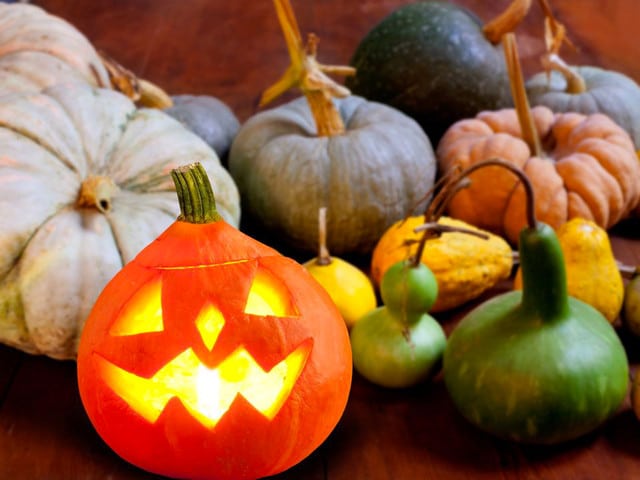
Several of the ancient traditions associated with Samhain, Pomona, and All Saint’s Day were brought to America by 19th century Irish immigrants. Originally, they carved potatoes and turnips into lanterns to place in windows as a welcome for their deceased loved ones. These were quickly replaced with America’s native, and much larger, pumpkins. These lanterns were the predecessor to our candle-filled jack-o-lanterns. Today, pumpkins used for carving are specifically grown for that purpose, and have been known to reach over 1,000 pounds in size (the current world record holder weighs in at a whopping 2,009 pounds!).
The Samhain practice of fortunetelling carried over to America with activities like bobbing for apples—which is also a nod to Pomona, her apples and their love symbolism. The game originated as a British folk tradition. Unmarried young adults would take turns trying to bite an apple, either hanging from a tree or floating in water, without the use of their hands. The first person to bite into an apple would supposedly be the next to marry. Young women would also peel apples onto the ground in hopes of seeing their future husband’s name spelled out in the peels.
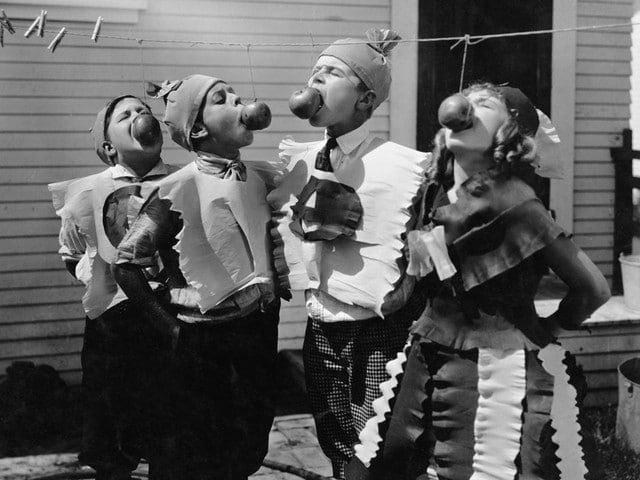
Over the years, the American Halloween tradition has evolved from a children’s celebration to a holiday for all ages. In modern times, Halloween costumes, candy and treats are enjoyed by kids and adults alike, though few consider the ancient roots of these now common traditions.
If you’d like to make a vintage-inspired Halloween treat, check out this recipe for Halloween Devil’s Food Cupcakes!
This post has been syndicated by PBS Food – click here to read.
—
Research Sources
Bannatyne, Lesley Pratt (1990). Halloween: An American Holiday, an American History. Pelican Publishing Company, Inc., Gretna, LA.
Eccleston, Janine. “Why The Halloween Industry Is Worth $8 Billion.” San Francisco Chronicle, 16 October 2012.
Smith, Andrew F. (2007). The Oxford Companion to American Food and Drink. Oxford University Press, New York, NY.
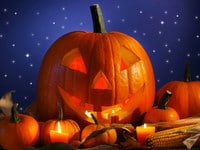



Shared! 🙂
Spooky and good things for Halloween! 🙂
What a wonderful article you wrote!
I am an historian and just read a similar article put out by the Smithsonian’s blog. I was very unimpressed by their lack of comprehensiveness of the scope. An entire book could easily be written about the traditions and history of this holiday. Thanks for bringing all of this information together for such a nice and informative read…I learned a couple of things, even though I have lectured on this topic many times. Good job!
Thank you so much Nancy! It means a lot to me that you took the time to comment. This site is truly a labor of love, and it’s so nice to know that it’s appreciated!
Love it! It’s so nice to see where our food and traditions come from! You do a wonderful job!!!
What a great foodie history lesson 🙂